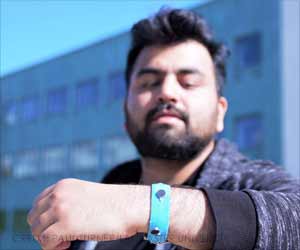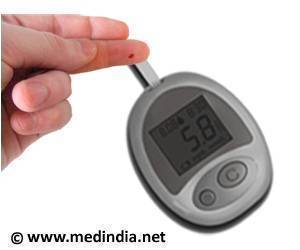Scientists have invented a wearable skin patch that can deliver drugs through the skin without causing pain.
- The possibility of drug delivery through the skin has not yet been explored
- A team of researchers has developed a wearable skin patch that can help the delivery of drugs through the skin using ultrasound waves
- The patch seems promising for local drug delivery, and further research can bring hope to those who need to self-administer drugs
Painless Skin Patch for Delivering Drugs
Researchers at the Massachusetts Institute of Technology (MIT) took this up as a challenge and developed a wearable patch that applies painless ultrasonic waves to the skin, creating tiny channels that drugs can pass through. This paper was published in the journal Advanced Materials.Researchers say that this approach can pave itself to the delivery of treatments for various skin conditions, along with being adapted to deliver hormones, muscle relaxants, and other drugs.
"The ease-of-use and high repeatability offered by this system provide a game-changing alternative to patients and consumers suffering from skin conditions and premature skin aging," says Canan Dagdeviren, an associate professor in MIT's Media Lab and the senior author of the study. "Delivering drugs this way could offer less systemic toxicity and are more local, comfortable, and controllable."
Creating Waves for Drug Delivery
While most drugs are delivered orally or intravenously, the researchers wanted to explore alternate methods of drug delivery. The skin can be an excellent route for much more targeted drug delivery for certain applications."The main benefit with skin is that you bypass the whole gastrointestinal tract. With oral delivery, you have to deliver a much larger dose in order to account for the loss that you would have in the gastric system," Shah says. "This is a much more targeted, focused modality of drug delivery."
The Ease of Wearable Skin Patches
Although ultrasound has been found to improve the skin's permeability to small-molecule medicines, most present strategies for delivering this type of drug delivery need bulky equipment. The authors of the study wanted to come up with a way to perform this kind of transdermal drug delivery with a lightweight, wearable patch, which could make it easier to use for a variety of applications.How Does the Wearable Skin Patch Work?
The device is made of a patch embedded with several disc-shaped piezoelectric transducers, which can convert electric currents into mechanical energy. Each disc is embedded in a polymeric cavity that contains the drug molecules dissolved in a liquid solution. When an electric current is applied to the piezoelectric elements, they generate pressure waves in the fluid, creating bubbles that burst against the skin. These bursting bubbles produce microjets of fluid that can penetrate through the skin's tough outer layer, the stratum corneum."This works open the door to using vibrations to enhance drug delivery. There are several parameters that result in generation of different kinds of waveform patterns. Both mechanical and biological aspects of drug delivery can be improved by this new toolset," Karami says.
Testing the Effectiveness of the Patch
The patch is made of polydimethylsiloxane (PDMS), a silicone-based polymer that can stick to the skin without tape. In the current study, the researchers tested the device by delivering a B vitamin called niacinamide, a popular ingredient in many sunscreens and moisturizers.When tested using pig skin, the researchers demonstrated that when they supplied niacinamide using the ultrasound patch, the amount of medicine that penetrated the skin was 26 times greater than the amount that could pass through the skin without the use of ultrasonics.
The outcomes of their novel device were also compared to micro-needling, a procedure frequently used for transdermal drug administration that involves puncturing the skin with tiny needles.
The researchers found that their patch was able to deliver the same amount of niacinamide in 30 minutes that could be delivered with microneedles over a six-hour period.
Currently the Patch is Just Skin Deep
With the current version of the device, drugs can penetrate a few millimeters into the skin, making this approach potentially useful for drugs that act locally within the skin. These could include niacinamide or vitamin C, which is used to treat age spots or other dark spots on the skin, or topical drugs used to heal burns.With further modifications to increase the penetration depth, this technique could also be used for drugs that need to reach the bloodstream, such as caffeine, fentanyl, or lidocaine. Dagdeviren also envisions that this kind of patch could be useful for delivering hormones such as progesterone. In addition, the researchers are now exploring the possibility of implanting similar devices inside the body to deliver drugs to treat cancer or other diseases.
What the Future Holds for the Wearable Patch
The researchers are also working on further optimizing the wearable patch, in hopes of testing it soon on human volunteers. They also plan to repeat the lab experiments they did in this study, with larger drug molecules."After we characterize the drug penetration profiles for much larger drugs, we would then see which candidates, like hormones or insulin, can be delivered using this technology, to provide a painless alternative for those who are currently bound to self-administer injections on a daily basis," Shah says.
Reference:
- A Conformable Ultrasound Patch for Cavitation-Enhanced Transdermal Cosmeceutical Delivery - (https://pubmed.ncbi.nlm.nih.gov/36934314/)
Source-Medindia
















